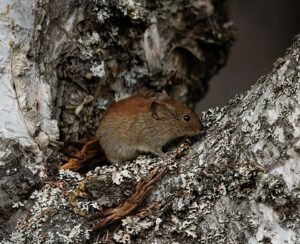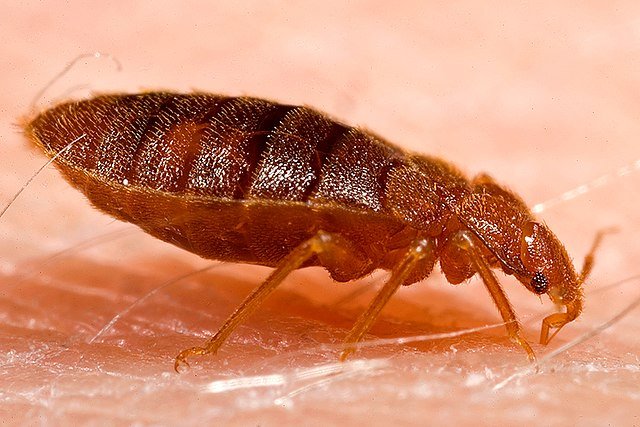Voles: Identification, Risks, and Control Methods
 Voles (genus Microtus) are small rodents often confused with mice, rats, or even moles. Unlike their more famous cousins, voles receive less public attention, yet their role in agriculture, gardening, and ecosystems is significant. They can cause extensive damage to crops, orchards, turf, and ornamental plants. Because of their burrowing and feeding habits, voles are considered both a nuisance and a study subject in wildlife ecology.
Voles (genus Microtus) are small rodents often confused with mice, rats, or even moles. Unlike their more famous cousins, voles receive less public attention, yet their role in agriculture, gardening, and ecosystems is significant. They can cause extensive damage to crops, orchards, turf, and ornamental plants. Because of their burrowing and feeding habits, voles are considered both a nuisance and a study subject in wildlife ecology.
This article provides a comprehensive look at voles: how to identify them, understand their biology, recognize infestation signs, manage risks, and explore control solutions. We also look at their cultural role in different regions and answer frequently asked questions.
Identification
Correct identification is critical before implementing any pest control measures. Voles differ from mice, though both belong to the rodent family.
Size: Voles range from 7 to 20 cm long depending on the species.
Appearance: Stocky body, short legs, and a short tail (much shorter than a mouse’s).
Ears and eyes: Small, often hidden in fur.
Teeth: Prominent orange incisors, continuously growing like all rodents.
Tracks and droppings: Runways through grass and small pellet-shaped droppings.
Key species include:
Microtus arvalis (Common vole) – widespread in Europe.
Microtus pennsylvanicus (Meadow vole) – abundant in North America.
Microtus agrestis (Field vole) – common in northern Europe.
Microtus montanus (Montane vole) – western United States.
Biology and Ecology
Voles are herbivores, with diets dominated by grasses, seeds, roots, bark, and occasionally crops.
Reproduction: Extremely rapid. Females can reproduce within three weeks of birth. Up to 10 litters per year, each with 3–8 young.
Lifespan: Short, usually less than one year in the wild due to predation.
Predators: Owls (Strigiformes), hawks, foxes (Vulpes vulpes), snakes, and even domestic cats.
Habitat: Prefer moist grasslands, orchards, gardens, and areas with dense ground cover. Burrows provide protection and nesting sites.
Their ecological role includes seed dispersal and acting as prey for predators, similar to how Fruit flies (Drosophila spp.) serve as food for birds or how Blow flies (Calliphoridae) link carcasses with decomposition cycles.
Global Distribution
Voles are found across the Northern Hemisphere.
North America: The Meadow vole (Microtus pennsylvanicus) is one of the most widespread mammals on the continent.
Europe: Microtus arvalis and Microtus agrestis dominate fields and meadows.
Asia: Several species adapted to steppe and tundra ecosystems.
Other areas: Introduced populations in New Zealand have become agricultural pests.
Their adaptability allows them to thrive from temperate grasslands to alpine meadows.
Risks and Damage
Voles are not typically dangerous to humans in direct contact, but their damage to agriculture and landscaping is serious.
Orchards: Girdling of fruit trees, stripping bark from young trunks.
Lawns and gardens: Runways and burrow holes destroy turf aesthetics.
Crops: Consumption of grains, root vegetables, and forage crops.
Forestry: Damage to seedlings and saplings in reforestation projects.
Disease risk: Though less associated with zoonotic outbreaks than Pigeons (Columba livia), voles can carry parasites or act as reservoirs for pathogens such as hantavirus in some regions.
Signs of Infestation
Detecting voles early helps reduce long-term damage. Common indicators:
Surface runways: Narrow, grass-free paths crisscrossing lawns or fields.
Burrow openings: Small holes (2–5 cm diameter).
Chewed vegetation: Gnaw marks on stems, bark, and tubers.
Droppings: Dark, rice-grain shaped pellets near runways.
Tree damage: Girdling at ground level, especially noticeable in winter.
Unlike moles, which leave mounds of soil, voles create surface runways and are less efficient diggers.
Control Methods
Effective vole management combines prevention, monitoring, and targeted control.
Habitat Modification
Mow grass short and remove weeds.
Eliminate mulch layers and dense ground cover near trees.
Store firewood off the ground to reduce shelter.
Exclusion
Wrap tree bases with hardware cloth (mesh size < 6 mm).
Install buried fencing at least 30 cm deep and 20 cm above ground.
Trapping
Snap traps baited with apples, peanut butter, or seeds placed in runways.
Multiple traps increase effectiveness.
Toxic Baits (Rodenticides)
Anticoagulant baits can be used, but must follow strict regulations.
Secondary poisoning risk to predators and pets is a major concern.
Repellents
Commercial repellents containing thiram or capsaicin deter feeding.
Must be reapplied after rain.
Biological Control
Encouraging natural predators such as owls or foxes can help.
Installing raptor perches or nest boxes increases predation pressure.
Advanced Approaches
Beyond basic methods, integrated pest management (IPM) combines ecological understanding with control.
Monitoring cycles: Vole populations fluctuate in multi-year cycles, often peaking every 3–4 years. Predictive monitoring can prevent outbreaks.
Barrier crops: Planting less palatable species around vulnerable crops.
Biocontrol research: Trials on fertility control methods and natural repellents.
Community action: Coordinated management across farms increases efficiency.
Cultural and Historical Context
Voles have featured in folklore and traditional beliefs.
In Scandinavian mythology, voles were sometimes linked to fertility due to their explosive breeding.
Farmers historically considered them omens of crop abundance or failure.
In Native American stories, voles occasionally symbolize persistence and survival, reflecting their ability to thrive despite predators.
Literature: They appear less frequently than mice or rats, but in ecological writing they often represent hidden forces shaping landscapes.
FAQ
Q1: How do voles differ from moles?
Moles eat insects and create soil mounds, while voles are herbivores and create runways.
Q2: Are voles dangerous to humans?
Direct danger is low, but they may host parasites and some viruses.
Q3: What is the fastest way to reduce vole numbers in a garden?
Snap trapping in active runways combined with habitat cleanup.
Q4: Do voles hibernate?
No, they remain active year-round, feeding under snow in winter.
Q5: Which predators are most effective at controlling vole populations?
Owls, hawks, foxes, and snakes. Installing raptor perches is practical.
Q6: Can voles damage large trees?
They mainly damage young saplings or shrubs. Mature trees usually survive, but repeated girdling weakens them.
Q7: Are voles the same as field mice?
No, though they are sometimes called "field mice," true mice (Mus spp.) have longer tails and larger ears.
Q8: How long do voles live?
Usually less than one year in the wild, though some survive longer in protected habitats.
Final Thoughts
Voles (Microtus spp.) may appear harmless at first glance, but their rapid reproduction and feeding habits make them a serious challenge for homeowners, farmers, and land managers. Their ability to thrive in diverse habitats means that simple measures are rarely enough. Long-term solutions depend on combining habitat management, exclusion, trapping, and natural predator encouragement. For professionals, monitoring population cycles and applying integrated pest management strategies can protect both crops and the wider environment.
Understanding voles also gives insight into how small mammals influence ecosystems. They serve as prey for countless predators, shape plant communities through their grazing, and act as bioindicators of habitat health. For humans, the key lies in balancing their ecological role with the need to protect agriculture, forestry, and property.
Disclaimer
This article is for informational purposes only. Pest control laws and approved chemicals vary by country. For best results and legal safety, we strongly recommend contacting a licensed pest control professional in your local area. Always make sure that the pest control technician is properly certified or licensed, depending on your country’s regulations. It’s important to confirm that they only use approved products and apply them exactly as instructed on the product label. In most places in Europe, UK, or USA, following label directions is not just best practice—it’s the law.
Author Bio
Nasos Iliopoulos
MSc Agronomist & Certified Pest Control Expert
Scientific Director – Advance Services (Athens, Greece)
Licensed Pest Control Business – Ministry of Rural Development & Food (GR)

